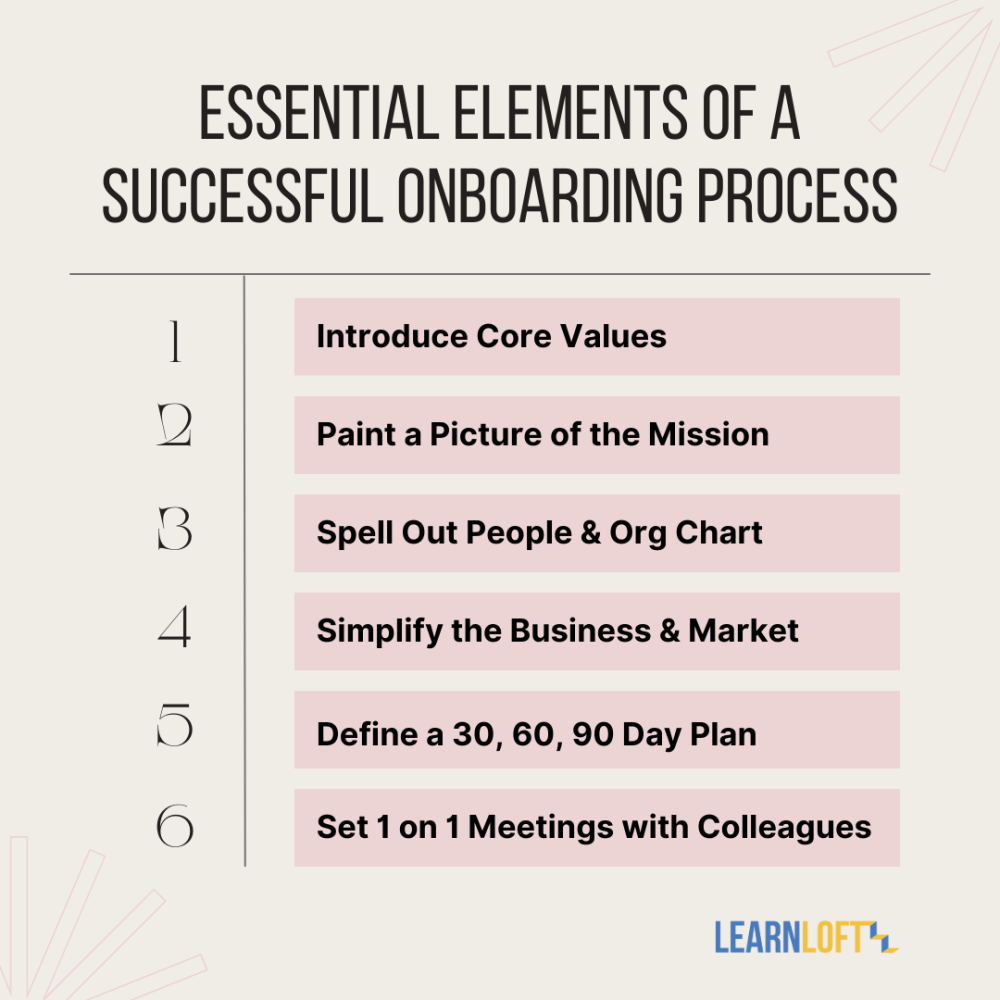Comments
- No comments found

It's not how you start that's important, it's how you finish.
While there is a good chance you have heard the famous quote by Jim George, please ignore it when it comes to onboarding. Because leaders only get one chance to make an impactful first impression on a new team member.
However, even strong leaders can falter or forget the importance of onboarding new employees properly. Regardless if it's because they have been in the role so long or feel they need more time for such an activity, failing to onboard team members is a common, costly oversight that can lead to a lack of buy-in, productivity, and engagement.
Leaders only get one chance to make an impactful first impression.
To give you a taste of the kind of impact onboarding has on a team or business:
Nearly 20% of employee turnover happens within the first 45 days of employment. (Forbes)
Proper onboarding can increase employee retention by 82%. (Brandon Hall Group)
New employees who went through a structured onboarding program were 58% more likely to be with the organization after three years. (shrm.com)
A negative onboarding experience can make new hires 2x as likely to look out for other jobs. (Digiate)
New employees with a good onboarding experience are 18x more committed (Bamboo HR)
You would think increasing employee retention and reducing employee turnover would be enough to onboard employees properly, but unfortunately, that wouldn't be the case. According to Gallup, only 12% of employees strongly agree that their organization does a great job of onboarding employees.
Before we go any further, let's get on the same page about a standard definition of onboarding. The Society of Human Resource Management defines it as; the processes by which new hires are integrated into the organization. The key word here is integrated. Ensuring new hires are connected and understand the new organization's beliefs, behaviors, and mission.
The point of onboarding employees is to ensure new team members get connected and understand the organization's beliefs, behaviors, and mission.
This is precisely where most leaders and organizations fall short. They don't consider onboarding as integrating and making new team members feel valued and important. Instead, they focus on paperwork, company benefits, and a tour of the building where they will be working.
Every great leader and organization knows onboarding is a process versus a one-time event. Here are the core elements of a successful onboarding process.

The first essential element of a successful onboarding process is to introduce the new employee to the company's or team's core values. This will help them understand the company culture and the kind of behavior that is expected of them.
Each core value show have a core value behavior attached to it so it's crystal clear what the fundamental belief the organization hold true looks like in application. This will also help them align their personal values with the company's values, which can lead to better job satisfaction and retention.
People need a mission to go on or a vision to participate in that is greater than exists today. Too often, leaders onboard employees by talking about the tasks they will be doing but forgetting to paint a bigger picture of how those activities help the organization live out its purpose. Tony Robbins explained why this is such a big mistake when he said, "Activity without purpose is the drain of your life."
Bad leaders talk about the tasks employees should be doing but forget to paint a bigger picture of how those activities help the organization live out its purpose.
In Building the Best, a key leadership principle was, "People persevere because of purpose, not pay." Your onboarding needs some form of vision or mission to ensure team members persevere when it gets tough.
The people in the organization or the organizational chart is obvious to you, but a new team member is most likely clueless. Add to the fact that you might have a hybrid work culture or virtual team members this makes even murkier for new employees. Spell out who people are, their job responsibilities, and some color around the impact they have had on the organization.
Do your best to exclude personal opinions or judgments about the kind of team member each person is to ensure you don't pass along personal bias. This can be particularly challenging if you don't work well with someone in the organization or you don't like them personally.
Each business or team works has a slightly different model and market. Spend dedicated time explaining the history of how the company creates value for customers and how it's changing in today's market. This step in the onboarding process could be extremely complex or it could be high-level brush to give them an overview.
The important part is that you aren't leaving their knowledge of the model or market to chance.
One of the biggest mistakes organizations make is not having a 30-60-90 excellence plan for every new employee. This often happens because HR conducts the initial onboarding session and the manager isn't aligned with HR to pick up and run with where they left off.
This Excellence Planner plan should outline specific goals and objectives for the new employee to achieve during their first few months on the job. It should also include regular check-ins and feedback sessions to ensure that the employee is on track and has the support they need to succeed.
Finally, a successful onboarding process should include opportunities for new employees to connect with their colleagues and build relationships within the company.
This can include team-building activities, mentorship programs, and social events. Building strong relationships with colleagues can help the new employee feel more engaged and connected to the company, which can lead to better job performance and retention.
Typically, the larger the organization, the more formal an onboarding program becomes. It's a lot easier to have the tools and resources as a bigger company than a smaller one. However, just because you're big doesn't mean your onboarding program is good and just because you are small doesn't mean you don't need one.
Irrespective of size, every manager and executive should care deeply about properly onboarding employees. When new employees feel welcomed, supported, and valued during their onboarding process, they are more likely to stay for the long-term and give their very best effort right out of the gate. This is because they will feel a sense of loyalty and commitment to the organization because it invested time, energy, and effort into their success.
The hard truth is great onboarding takes time and energy. It's a crafted experience by leaders because they know they only get one chance to make an impactful first impression on a new team member.
John is the CEO of LearnLoft, author of, F.M.L. Standing Out & Being a Leader and host of the 'Follow My Lead' Podcast. He writes or has been featured on Inc.com, LinkedIn Pulse, TrainingIndustry.com, eLearningIndustry.com, CNBC Money, and more. John completed his education at the University of Maryland College.
Leave your comments
Post comment as a guest